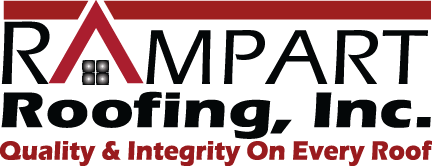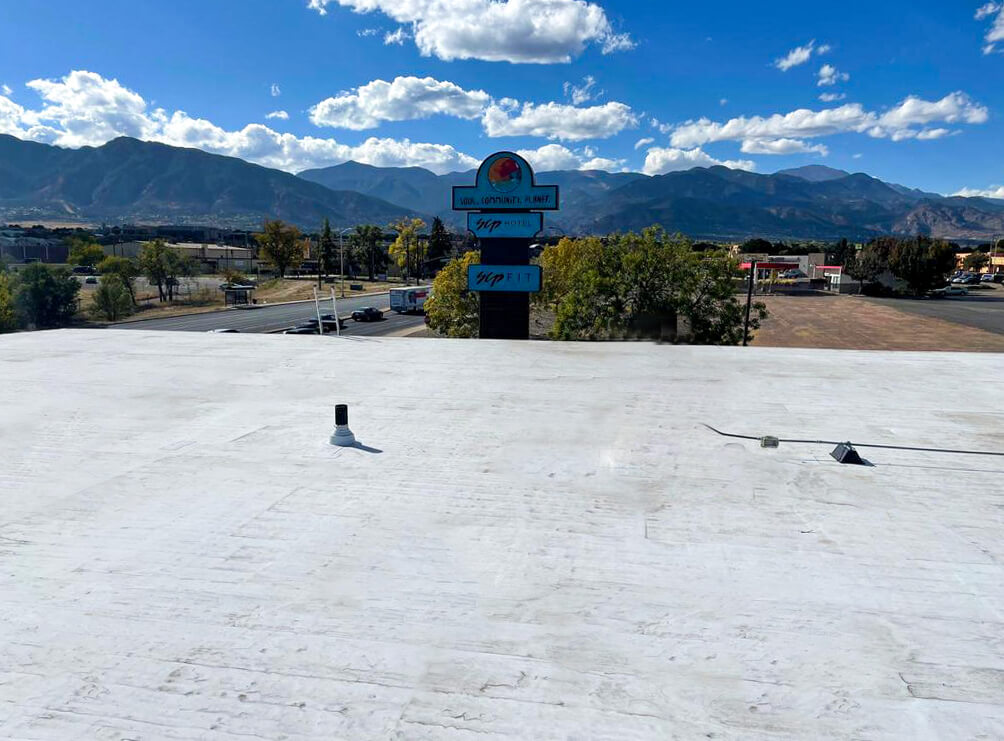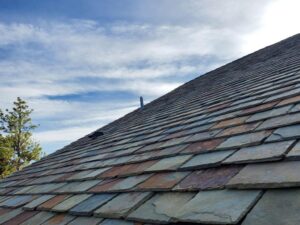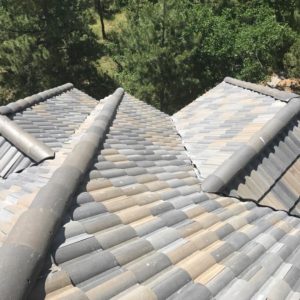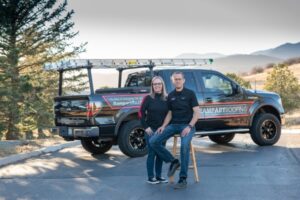Colorado Springs Hotel Commercial Roof Replacement
A leaking roof is the bane of any building manager or supervisor. Handling the constant repairs and complaints can become time consuming and it can be difficult to find a reliable expert to help create a permanent solution.
When the building manager of Colorado Springs’ new SCP hotel contacted us for a roofing evaluation, the roof leaks were severe. The hotel was built in 1967 and had undergone several rounds of exterior and interior renovations throughout the years. The hotel staff needed someone to help with the continued restoration of this unique hotel. We sent an expert from our commercial roofing division right away to evaluate the issues and determine if a commercial re-roof or repairs were needed to make the leaking nightmares go away.
With 200 squares (20,000 sq. ft.) to be re-roofed, this would be one of Rampart Roofing’s largest commercial projects ever. “We needed to create a plan to complete these repairs in a timely and safe manner. This would be one of our largest projects ever at 200 squares and our whole team worked tirelessly to be sure we got it right,” says Rampart Roofing owner Matt Munro.
What did Rampart Roofing do to restore the life of this roof and create a watertight building for years to come?
We implemented a safety plan: First, we installed 740’ of high visibility warning lines 5-6 feet inside the roof’s edges. Then, we set up fall protection for the roofing crew. Because this building has a concrete deck, we placed French Creek hole anchors into the concrete. Our roofers attached their safety lanyards and harnesses to these anchors. We then cordoned a staging area on the ground where our ladder was set up and where we kept our materials that were not loaded onto the roof by crane. Everyone involved was required to wear hard hats and high visibility safety gear. Safety glasses were required for those operating power equipment. Each day, all members of our roofing crew were required to sign a safety log.

We gathered our materials: This flat roofing project required 600 sheets of polyisocyanurate (ridged foam insulation), 21 rolls of TPO (thermoplastic polyolefin) roofing, 40 5-gallon pails of bonding agent and 50 cartridges of low-rise adhesive. We created a debris chute: This hotel has a 2-story side and a 4-story side. The building manager asked us to create a debris chute on the 4-story side of the building because it gets less foot traffic.

We tore off the existing roof: The old roof was a tar and gravel roof over fiberboard over 3” of EPS (expanded polystyrene) foam. We used a tear off machine to cut through the old roof. The gravel was recycled, and all other materials were discarded. The whole roof tear off required 26 roll off dumpsters.

We installed the new roof: We cleaned the concrete deck to ensure proper adhesion of the new ridged foam insulation (polyisocyanurate). We fastened nailer boards around the perimeter. Because the building has a concrete roof deck, we used 2-part low-rise adhesive to adhere to ridged foam insulation (polyisocyanurate) to the concrete. Next, we installed the TPO membrane. The membrane was fully adhered to the ridged foam insulation with TPO bonding adhesive. The seams were all heat-welded. After that, we installed the metal edges and cover tape. To finish the job, we installed TPO pipe boots on the plumbing vents and flashed the roof penetrations to prevent roof leaks.

This 20,000 square foot flat commercial roof required careful planning for safety, tear off, and the reroofing process. The new roof is free of leaks and will last for many years to come. If you’re tired of building roof leaks, constant complaints, and interior issues, call us today for a commercial roofing evaluation and estimate at (719) 487-7663 or contact us online.
